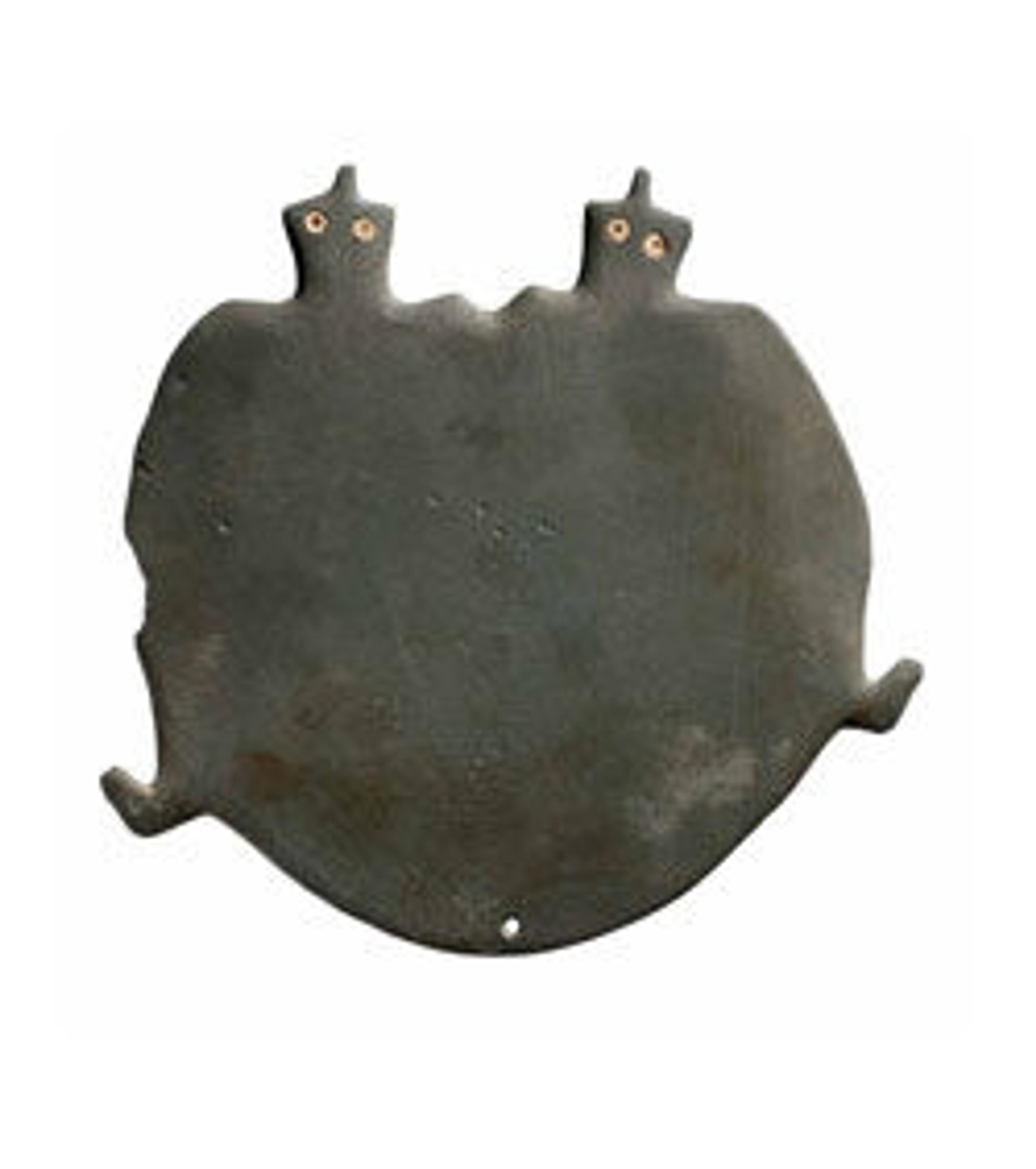White cross-lined ware bowl illustrating a hippo hunt
A hippo hunt is underway on the exterior of this beautifully preserved bowl. The man wears hunting gear, that is, a penis-sheath and an animal’s tail, and holds two cords attached to harpoons now embedded in the face of the large hippo that faces him. A second smaller hippo, behind the first, shares the same fate. For the rest of Egyptian history, hippo hunts were incorporated into certain rituals and myths, most of which revolved around securing the king’s power.
Hippopotami are dangerous animals, and the Egyptians knew how easily a lightweight boat could be over turned and the occupants left to face a massive, angry animal. By 3700 B.C., the ancient Egyptians represented the hippo in scenes on ceramic vessels that show the animals being controlled by either humans or the environment.
Hippopotami are dangerous animals, and the Egyptians knew how easily a lightweight boat could be over turned and the occupants left to face a massive, angry animal. By 3700 B.C., the ancient Egyptians represented the hippo in scenes on ceramic vessels that show the animals being controlled by either humans or the environment.
Artwork Details
- Title: White cross-lined ware bowl illustrating a hippo hunt
- Period: Predynastic, late Naqada I–early Naqada II
- Date: ca. 3700–3450 B.C.
- Geography: From Egypt
- Medium: Pottery, paint
- Dimensions: H: 8.5 cm (3 3/8 in.); diam: 12.7 cm (5 in.)
- Credit Line: Rogers Fund, 1912
- Object Number: 12.182.15
- Curatorial Department: Egyptian Art
More Artwork
Research Resources
The Met provides unparalleled resources for research and welcomes an international community of students and scholars. The Met's Open Access API is where creators and researchers can connect to the The Met collection. Open Access data and public domain images are available for unrestricted commercial and noncommercial use without permission or fee.
To request images under copyright and other restrictions, please use this Image Request form.
Feedback
We continue to research and examine historical and cultural context for objects in The Met collection. If you have comments or questions about this object record, please complete and submit this form. The Museum looks forward to receiving your comments.
